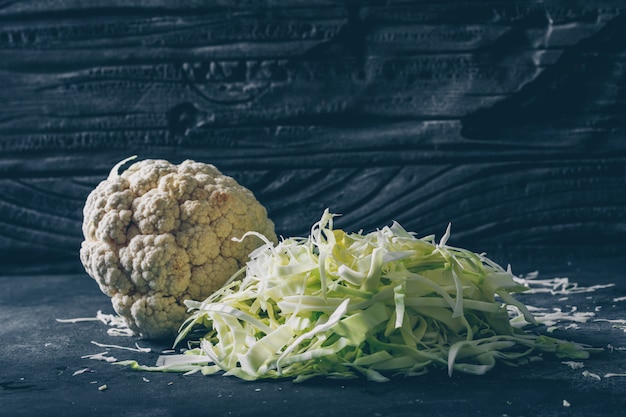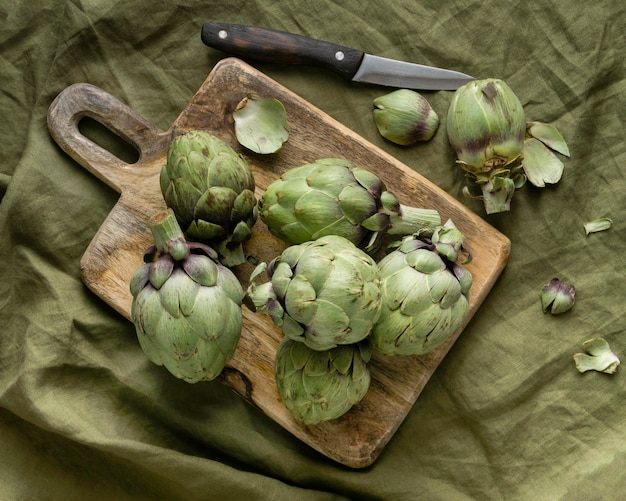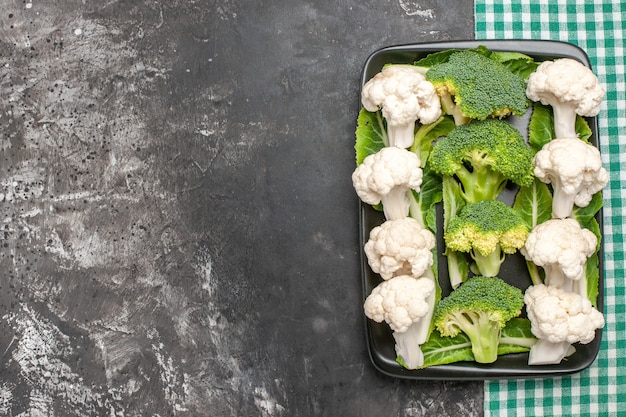Napa cabbage! It's everywhere these days, and for good reason. This crunchy, flavourful, and versatile vegetable is a staple in my kitchen, and I bet it's quickly becoming a favourite in yours too. But sometimes, you just need a little guidance, right? That's where I come in.
I'm going to walk you through everything you need to know about Napa cabbage, from how to pick the perfect head to cooking it up in all sorts of delicious ways. Let's dive in!
Part 1: Understanding Napa Cabbage

Before we get our hands dirty, let's get familiar with the star of the show.
What is Napa Cabbage?
Napa cabbage, also known as Chinese cabbage or celery cabbage, is a leafy green veggie with a unique history. It's a hybrid, you see, a cross between regular cabbage and celery. That's why it has those long, loose leaves and a slightly sweet, almost celery-like flavour. It's a bit more delicate than regular cabbage, which is why it shines in stir-fries and salads, where it adds a lovely crunch and subtle sweetness.
Types of Napa Cabbage
You might be surprised to learn there are a few different types of Napa cabbage out there. Let me break them down for you:
Standard Napa Cabbage: This is the most common type, with long, green leaves and that iconic pointed shape. It's the workhorse of Napa cabbage, perfect for all sorts of recipes.
Bok Choy: Bok choy is a bit smaller and more compact, with wider leaves. It has a slightly more intense flavour than standard Napa cabbage and holds up well in stir-fries and soups.
Baby Napa Cabbage: This is essentially a miniature version of standard Napa cabbage. It's ideal for salads or dishes where you want a delicate crunch and a less intense flavour.
Choosing the Perfect Napa Cabbage
Heading to the supermarket to grab a Napa cabbage? Here's what to look for:
Firmness: You want a Napa cabbage that feels firm and heavy for its size. This indicates freshness and good moisture content.
Freshness: The leaves should be bright green and free from any signs of wilting or yellowing. You know, a vibrant green is a good sign!
No Bruises: Check for any bruises or cuts on the head. These can indicate damage and potentially affect the freshness of the cabbage.
Part 2: Preparing Napa Cabbage

You've got your Napa cabbage - now it's time to get it ready for cooking!
Washing and Trimming
First things first, a good wash is essential. I usually run it under cold water and then pat it dry with a clean kitchen towel. You can also soak it in a bowl of cold water for a few minutes to remove any lingering dirt. Once it's clean, trim off the root end and discard it.
Cutting Napa Cabbage
The way you cut Napa cabbage depends on how you plan to use it. Let's explore a few options:
1. For Stir-Fries
If you're stir-frying, you want thin slices to ensure even cooking and a nice crispy texture. First, cut the head in half lengthwise. Then, slice those halves into thin pieces, just like you'd slice a baguette.
2. For Salads
For salads, I like to chop Napa cabbage into bite-sized pieces. You can also use a mandoline for thinner slices and a more delicate presentation.
3. For Soups
For soups, you can either slice it thinly or shred it. Shredding helps it cook faster and release more flavour.
Part 3: Cooking with Napa Cabbage

Now for the fun part – let's cook! Here are some of my favourite ways to use Napa cabbage.
Stir-Frying Napa Cabbage
Stir-fries are my go-to for Napa cabbage. It's quick, easy, and the cabbage gets beautifully crispy and delicious.
Ingredients
1 Napa cabbage, thinly sliced
1 tablespoon oil (sesame oil is my personal favourite!)
2 cloves garlic, minced
1 inch ginger, minced
1/2 cup chicken broth
Salt and pepper to taste
Instructions
1. Heat the oil in a wok or large skillet over high heat.
2. Add the garlic and ginger and stir-fry for about 30 seconds, until fragrant.
3. Toss in the sliced Napa cabbage and stir-fry for about 5 minutes, or until tender-crisp.
4. Pour in the chicken broth and bring it to a simmer.
5. Season with salt and pepper to taste.
6. Serve immediately.
Steaming Napa Cabbage
Steaming Napa cabbage is a simple and healthy method. It preserves the cabbage's nutrients and flavour, resulting in a tender and delicious side dish.
Ingredients
1 Napa cabbage, cut into wedges
1 tablespoon soy sauce
1 tablespoon sesame oil
1 teaspoon sugar
Instructions
1. Place the Napa cabbage wedges in a steamer basket.
2. In a small bowl, whisk together the soy sauce, sesame oil, and sugar.
3. Pour the sauce over the Napa cabbage.
4. Steam for about 10 minutes, or until the Napa cabbage is tender.
5. Serve immediately.
Braising Napa Cabbage
Braising Napa cabbage is a slow cooking method that results in incredibly soft and flavourful cabbage. It's a bit more hands-off but worth the wait.
Ingredients
1 Napa cabbage, cut into wedges
1 tablespoon oil
1 onion, chopped
2 cloves garlic, minced
1 cup chicken broth
1/2 cup soy sauce
1/4 cup brown sugar
1/2 teaspoon ground ginger
Salt and pepper to taste
Instructions
1. Heat the oil in a large dutch oven or pot over medium heat.
2. Add the onion and garlic and cook until softened, about 5 minutes.
3. Add the Napa cabbage wedges and cook for about 5 minutes, turning occasionally.
4. Pour in the chicken broth, soy sauce, brown sugar, and ginger.
5. Bring to a boil, then reduce heat to low, cover, and simmer for about 30 minutes, or until the cabbage is tender.
6. Season with salt and pepper to taste.
7. Serve immediately.
Part 4: Napa Cabbage in Asian Cuisine
Napa cabbage is a star ingredient in Asian cuisine, and for good reason. It's used in a wide range of dishes, from simple stir-fries to elaborate dumplings.
Napa Cabbage in Stir-Fries
You've already seen a basic Napa cabbage stir-fry, but there are endless variations. Experiment with different vegetables like mushrooms, carrots, and bell peppers. Add protein like tofu, chicken, or shrimp, and play with different sauces like soy sauce, oyster sauce, hoisin sauce, and chili sauce.
Napa Cabbage in Soups
Napa cabbage is often used in Asian soups, such as miso soup and wonton soup. It adds a delightful sweetness and a refreshing touch.
Napa Cabbage in Dumplings
Napa cabbage is a common ingredient in dumplings, especially in Chinese cuisine. It's frequently used as a filling, often with pork or shrimp.
Part 5: Napa Cabbage in Western Cuisine
Napa cabbage isn't just for Asian cuisine; it's making its way into Western kitchens too. It's a welcome addition to salads, sandwiches, and even pizzas.
Napa Cabbage Salads
Napa cabbage adds a delightful crunch and a hint of sweetness to any salad. It's delicious combined with other fresh vegetables like carrots, celery, and bell peppers, and it also pairs well with fruits like apples and pears.
Napa Cabbage Sandwiches
Napa cabbage is a refreshing and light addition to sandwiches. It can be used as a base, much like lettuce, or layered with other vegetables like tomatoes and cucumbers.
Napa Cabbage Pizzas
Trust me, Napa cabbage on pizza is a delicious surprise. It adds a touch of sweetness and a delightful crunch. Try it with your favourite pizza toppings or even as a base for a unique crust.
Part 6: Napa Cabbage in Other Dishes
Now, let's explore some more unique ways to use Napa cabbage.
Napa Cabbage Coleslaw
Elevate your coleslaw game with Napa cabbage! It's a fantastic addition to classic coleslaw recipes and offers a fresh twist. Get creative with your flavour combinations.
Napa Cabbage Fritters
Napa cabbage fritters are like savoury little pancakes. They're easy to make and perfect for a light lunch or a snack.
Napa Cabbage Wraps
You know those lettuce wraps? Napa cabbage leaves can be used in the same way. They're perfect for holding delicious fillings like chicken, shrimp, or tofu.
Part 7: Napa Cabbage Substitutions
Sometimes, you might not have Napa cabbage on hand, or you might want to try something different. Here are some good substitutes:
1. Bok Choy
Bok choy is a close relative of Napa cabbage with a similar flavour and texture. You can use it interchangeably in most recipes.
2. Regular Cabbage
Regular cabbage is a bit more dense and has a stronger flavour than Napa cabbage, but it can work in a pinch. Just adjust the cooking time accordingly.
3. Spinach
Spinach is a leafy green with a slightly bitter flavour and a more delicate texture than Napa cabbage. It's a good substitute in salads and stir-fries but less suitable for braising or steaming.
Part 8: Storing Napa Cabbage
You've cooked your Napa cabbage, and now you've got leftovers. Store it properly to keep it fresh and delicious.
Storing Uncut Napa Cabbage
If you haven't cut the Napa cabbage, you can store it in the refrigerator for up to a week. Wrap it tightly in plastic wrap or place it in a plastic bag.
Storing Cut Napa Cabbage
For cut Napa cabbage, store it in a plastic container in the refrigerator for up to 3 days. You can also store it in a plastic bag, but make sure to remove as much air as possible.
Part 9: Nutritional Benefits of Napa Cabbage
Besides being delicious, Napa cabbage is good for you! It's packed with essential vitamins and minerals, including:
Vitamin K: Essential for blood clotting and bone health.
Vitamin C: A powerful antioxidant that boosts your immune system.
Folate: Important for cell growth and development.
Potassium: Helps regulate blood pressure and muscle function.
Calcium: Essential for strong bones and teeth.
Fiber: Aids in digestion and helps you feel full.
Napa cabbage is also low in calories and fat, making it a healthy and satisfying addition to your diet.
Part 10: FAQs
Ready for some answers? Here are some of the most common questions about Napa cabbage:
1. Can you eat Napa cabbage raw?
Absolutely! It's a great addition to salads or wraps. Just make sure to wash it thoroughly first.
2. How long does it take to cook Napa cabbage?
The cooking time depends on the method you use. Stir-frying takes about 5 minutes, steaming about 10 minutes, and braising about 30 minutes.
3. What does Napa cabbage taste like?
Napa cabbage has a mild, slightly sweet flavour. It's not as strong as regular cabbage.
4. Can you freeze Napa cabbage?
Yes, you can freeze Napa cabbage. Blanch it for a few minutes first, then drain and pat it dry. Store it in a freezer-safe bag or container for up to 3 months.
5. What are some other ways to use Napa cabbage?
Besides the recipes I've shared, try using Napa cabbage in kimchi, a fermented Korean side dish. It's also a great addition to soups, stews, and rice dishes.
Conclusion
And there you have it – my comprehensive guide to cooking with Napa cabbage. I hope you've found it informative and inspiring. Now, go forth and explore the world of Napa cabbage! It's delicious, versatile, and healthy. What more could you ask for?
Everyone is watching

Prime Rib Roast Cooking Time Chart: Per Pound Guide
Cooking TipsPrime rib roast. Just the name conjures images of lavish dinners, crackling fires, and hearty laughter. It’s ...

How Long to Bake Potatoes in the Oven (Perfect Every Time)
Cooking TipsBaked potatoes are a staple in my kitchen. They're incredibly versatile, delicious, and surprisingly easy to m...

Perfect Rice Every Time: The Ultimate Guide to Cooking Rice
Cooking TipsAs a self-proclaimed foodie, I've always been a bit obsessed with rice. It's the foundation of countless cuisi...

The Ultimate Guide to Cooking Asparagus: Tips, Techniques, and Recipes
Cooking TipsAsparagus. The mere mention of this spring delicacy conjures up images of vibrant green spears, crisp and burs...

Ultimate Guide to Cooking the Perfect Thanksgiving Turkey
Cooking TipsThanksgiving. Just the word conjures up images of overflowing tables laden with delicious food, the scent of r...
